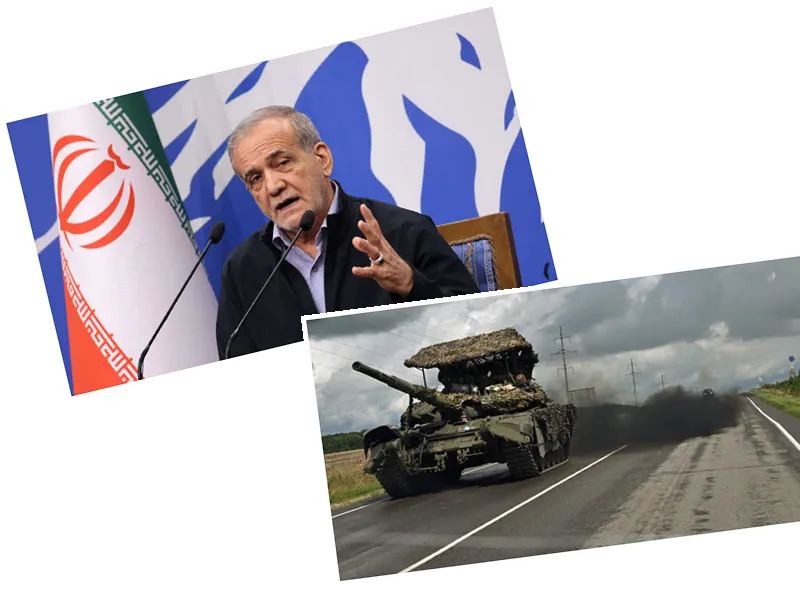The tragic helicopter accident involving Iranian President Ebrahim Raisi, Foreign Minister Hossein Amir Abdollahian, and other officials has led to an array of speculations about its causes. Authorities in the Islamic Republic have suggested various reasons, including an emergency landing, adverse weather conditions, and maintenance problems exacerbated by international sanctions. Experts indicate that it is premature to finalize the causes as investigations into plane accidents are highly complex, lasting for months and considering many factors.
The Iranian media and authorities have described the helicopter collision as an accident, ruling out sabotage or assassination for now. Israeli sources confirmed to Reuters their country’s non-involvement in the incident. Initially, the term 'hard landing' was used by Iranian authorities, often a euphemism for any aviation accident, not necessarily due to forced landings. The incident occurred while three helicopters were returning from the Azerbaijan border, where Raisi had attended a dam inauguration. One of the helicopters, a Bell 212, a twin-engine model from the 1960s, suffered the fatal crash.
The Bell 212 model, received before the Islamic Revolution in 1979, faces maintenance challenges due to US sanctions, causing a blockade on aircraft parts and services. Former Foreign Minister Javad Zarif has criticized the US for impeding Iran's access to essential aircraft parts. Despite the helicopter model’s reliability, maintenance issues coupled with the parts' aging could have contributed to the accident. Iran's embargo circumvention strategies include sourcing parts from third countries and manufacturing them independently.
Current hypotheses lean towards challenging weather conditions as a prime cause. The Dizmar forest area experienced low temperatures and snow-water precipitation, creating a risk of ice formation on older helicopters lacking anti-icing systems. Such environmental hazards can heavily impact the helicopter’s basic instruments. Helicopter pilots generally rely on visual references, and poor visibility conditions force them into highly precarious instrumental flight conditions, a transition requiring substantial training and quick adaptation.
The helicopter’s lack of a distress call suggests the pilot had little time to stabilize the aircraft. Similar circumstances contributed to the fatal crash of NBA star Kobe Bryant in 2021. Stabilizing the helicopter and gaining altitude are critical in these scenarios, highlighting the vital role of pilot training and reaction speed. The decision to fly amidst questionable weather conditions often involves nuanced judgment and pressures, particularly with VIP passengers onboard, a dilemma exemplified by the 2010 plane accident involving Polish President Lech Kaczynski.
Iranians are engulfed in uncertainty regarding President Raisi's fate, as search and rescue efforts continue in the rugged, foggy terrains of East Azerbaijan province. Continuous media broadcasts keep the nation updated, while prayer sessions are held nationwide. Interior Minister Ahmad Vahidi cites severe weather and geographical challenges in hampering rescue operations. Supreme Leader Ayatollah Ali Khamenei has urged people to pray for the safe return of the president and his aides.
Following the crash, misinformation and rumors spread rapidly, compelling officials to request reliance on state media updates. Prominent figures such as Russian Foreign Ministry spokeswoman Maria Zakharova and leaders from Turkey, Armenia, Azerbaijan, and Iraq expressed their readiness to assist in the search and rescue operations. The European Council and the US State Department are also closely monitoring the situation.
- Former Foreign Minister Javad Zarif directly criticized the United States for imposing sanctions that hinder Iran's access to necessary aircraft parts and services. This ongoing blockade has added significant pressure on Iran as it strives to maintain its aging fleet, prompting numerous attempts to source parts from third countries or manufacture them domestically.
- Helicopter accidents in conditions of poor visibility, such as the one affecting President Raisi, represent around 15% of aviation accidents according to sector authorities in the US and Europe. Of these, an overwhelming majority end in fatalities. The sudden transition to instrumental flight conditions demands precise training and rapid adaptation, underscoring the dangerous nature of IIMC scenarios.





